
How to Use adjustable buck boost converter: Examples, Pinouts, and Specs
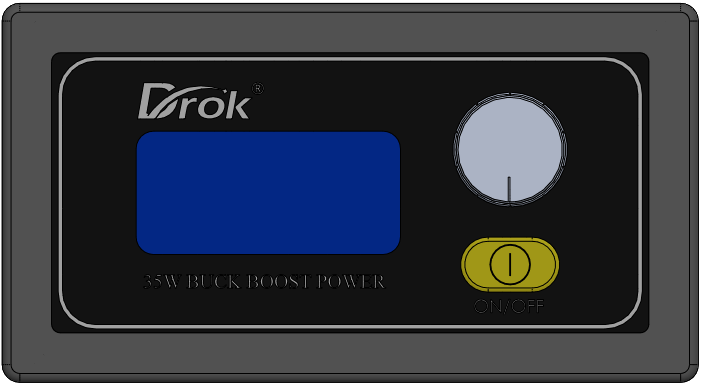
 Design with adjustable buck boost converter in Cirkit Designer
Design with adjustable buck boost converter in Cirkit DesignerIntroduction
The adjustable buck-boost converter is a versatile power converter capable of stepping down (buck) or stepping up (boost) an input voltage to a desired output voltage. This component is widely used in applications where the input voltage can vary above or below the required output voltage. Its adjustable nature allows users to fine-tune the output voltage to meet specific circuit requirements.
Explore Projects Built with adjustable buck boost converter
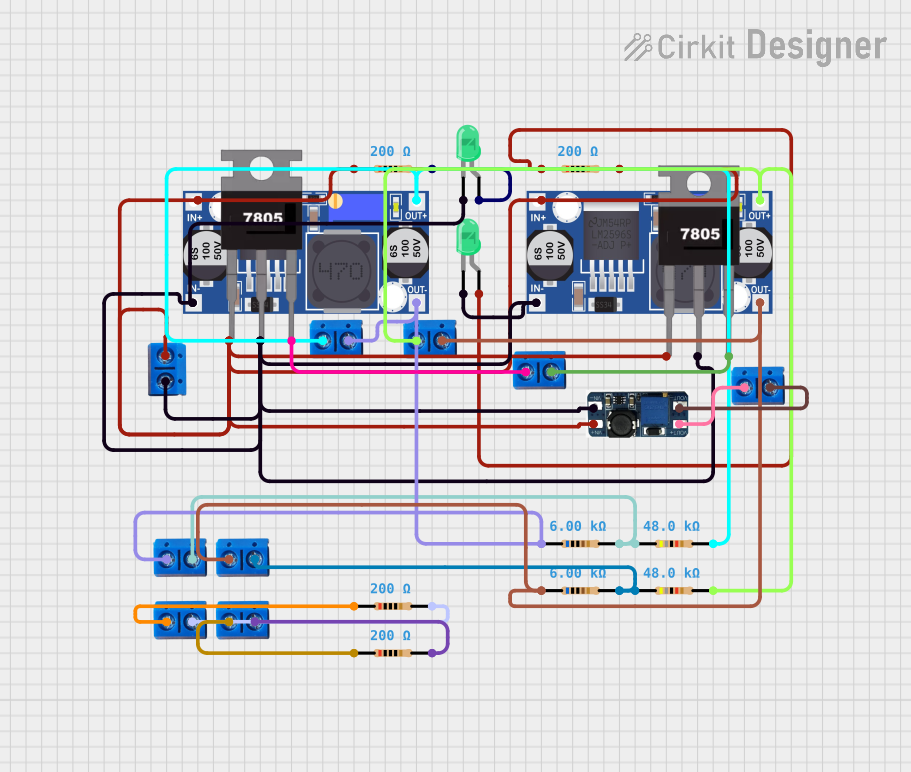
 Open Project in Cirkit Designer
Open Project in Cirkit Designer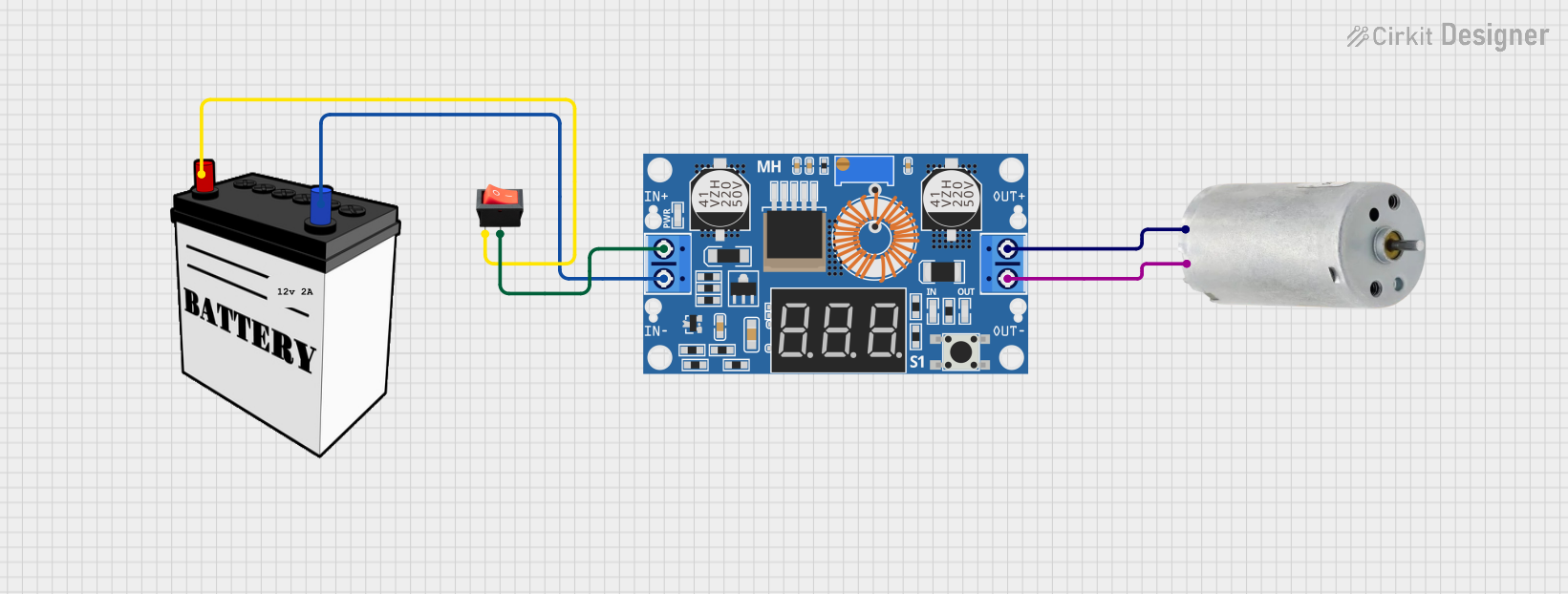
 Open Project in Cirkit Designer
Open Project in Cirkit Designer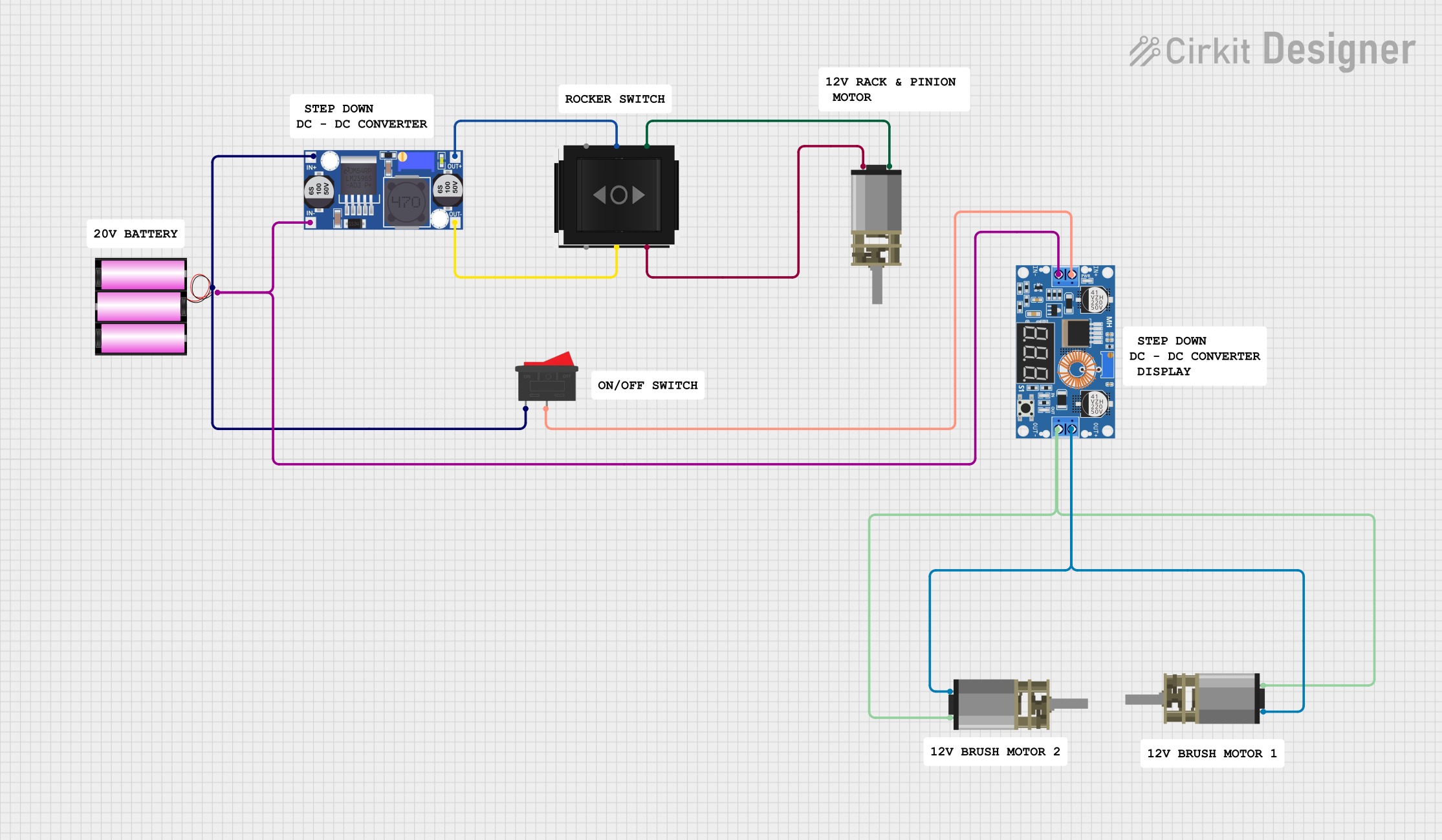
 Open Project in Cirkit Designer
Open Project in Cirkit Designer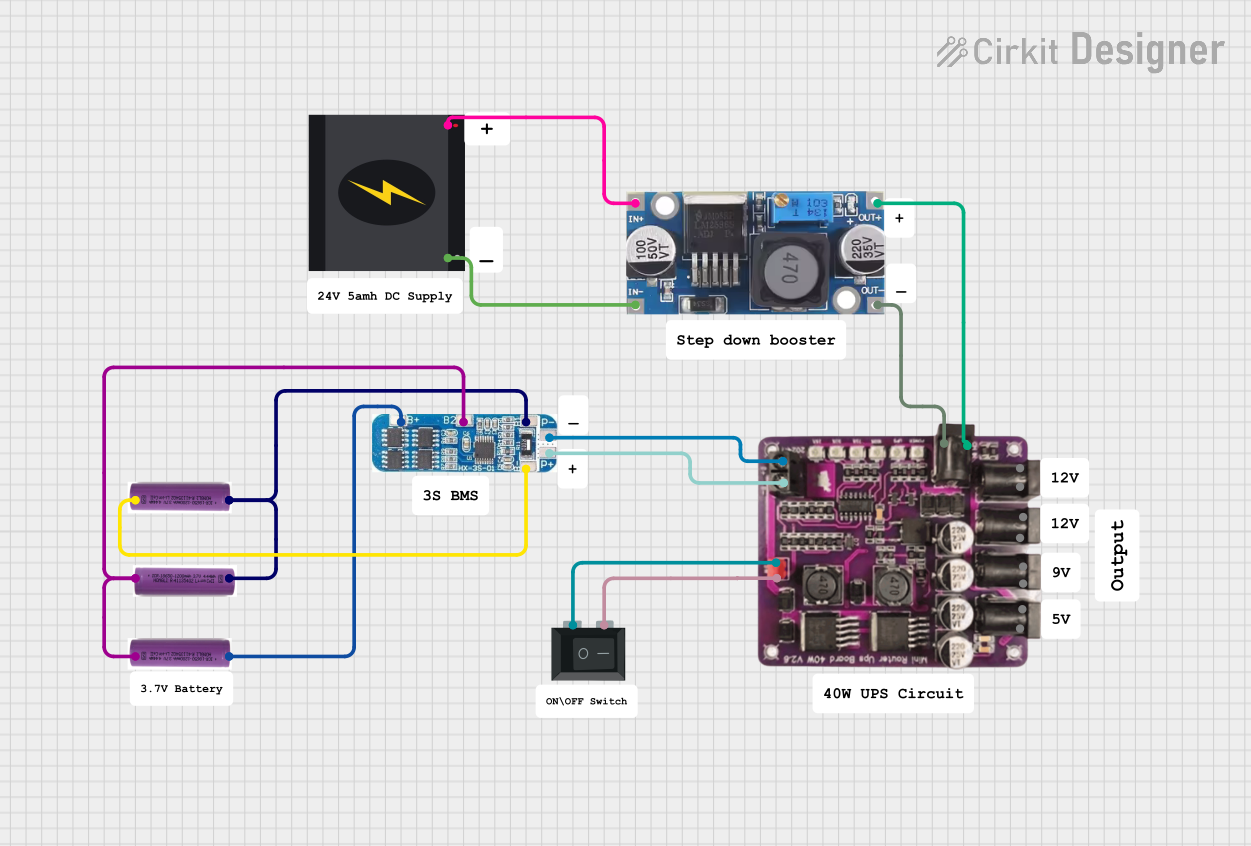
 Open Project in Cirkit Designer
Open Project in Cirkit DesignerExplore Projects Built with adjustable buck boost converter

 Open Project in Cirkit Designer
Open Project in Cirkit Designer
 Open Project in Cirkit Designer
Open Project in Cirkit Designer
 Open Project in Cirkit Designer
Open Project in Cirkit Designer
 Open Project in Cirkit Designer
Open Project in Cirkit DesignerCommon Applications and Use Cases
- Battery-powered devices where the input voltage fluctuates (e.g., lithium-ion batteries)
- Solar power systems to regulate voltage from solar panels
- Powering microcontrollers and sensors with stable voltage
- Portable electronics and USB power banks
- LED drivers and lighting systems
Technical Specifications
Below are the key technical details for a typical adjustable buck-boost converter. Specifications may vary depending on the specific model.
| Parameter | Value |
|---|---|
| Input Voltage Range | 3V to 30V |
| Output Voltage Range | 1.25V to 35V (adjustable) |
| Output Current | Up to 2A (varies by model) |
| Efficiency | Up to 90% (depending on load and input/output) |
| Switching Frequency | 150 kHz to 300 kHz |
| Operating Temperature | -40°C to +85°C |
| Dimensions | Typically 22mm x 17mm x 4mm |
Pin Configuration and Descriptions
The adjustable buck-boost converter typically has the following pins or terminals:
| Pin/Terminal | Description |
|---|---|
| VIN | Input voltage terminal (connect to power source) |
| GND | Ground terminal (common ground for input and output) |
| VOUT | Output voltage terminal (connect to load) |
| ADJ (optional) | Adjustment pin for fine-tuning output voltage |
Usage Instructions
How to Use the Component in a Circuit
Connect the Input Voltage (VIN):
- Attach the positive terminal of your power source to the VIN pin.
- Connect the negative terminal of your power source to the GND pin.
Connect the Output Voltage (VOUT):
- Attach the positive terminal of your load to the VOUT pin.
- Connect the negative terminal of your load to the GND pin.
Adjust the Output Voltage:
- Use the onboard potentiometer (or external adjustment pin, if available) to set the desired output voltage.
- Measure the output voltage using a multimeter while adjusting to ensure accuracy.
Verify Connections:
- Double-check all connections to ensure proper polarity and secure wiring.
Power On:
- Turn on the power source and verify that the output voltage matches your desired setting.
Important Considerations and Best Practices
- Input Voltage Range: Ensure the input voltage is within the specified range to avoid damaging the converter.
- Heat Dissipation: For high current loads, the converter may generate heat. Use a heatsink or ensure proper ventilation.
- Load Requirements: Verify that the load does not exceed the maximum output current rating of the converter.
- Output Voltage Adjustment: Adjust the potentiometer slowly to avoid overshooting the desired voltage.
- Capacitors: Use appropriate input and output capacitors to stabilize the voltage and reduce noise.
Example: Using with an Arduino UNO
The adjustable buck-boost converter can be used to power an Arduino UNO with a stable 5V output. Below is an example setup and code:
Circuit Setup
- Connect a 9V battery to the VIN and GND terminals of the converter.
- Adjust the output voltage to 5V using the potentiometer.
- Connect the VOUT terminal to the Arduino UNO's 5V pin.
- Connect the GND terminal to the Arduino UNO's GND pin.
Example Code
// Example code to blink an LED using Arduino UNO powered by a buck-boost converter
// Ensure the buck-boost converter is set to output 5V before connecting to Arduino
const int ledPin = 13; // Pin connected to the onboard LED
void setup() {
pinMode(ledPin, OUTPUT); // Set the LED pin as an output
}
void loop() {
digitalWrite(ledPin, HIGH); // Turn the LED on
delay(1000); // Wait for 1 second
digitalWrite(ledPin, LOW); // Turn the LED off
delay(1000); // Wait for 1 second
}
Troubleshooting and FAQs
Common Issues and Solutions
| Issue | Possible Cause | Solution |
|---|---|---|
| No output voltage | Incorrect wiring or loose connections | Verify all connections and ensure proper polarity. |
| Output voltage not adjustable | Faulty potentiometer or adjustment pin | Check the potentiometer and replace if necessary. |
| Overheating during operation | Excessive load or poor ventilation | Reduce the load or add a heatsink for better cooling. |
| Output voltage fluctuates | Insufficient input/output capacitors | Add appropriate capacitors to stabilize the voltage. |
| Arduino does not power on | Incorrect output voltage setting | Ensure the output voltage is set to 5V for Arduino UNO. |
FAQs
Can I use this converter with a lithium-ion battery?
- Yes, the converter is ideal for lithium-ion batteries as it can handle varying input voltages and provide a stable output.
What happens if the input voltage exceeds the specified range?
- Exceeding the input voltage range can damage the converter. Always ensure the input voltage is within the specified limits.
Can I use this converter to power multiple devices simultaneously?
- Yes, as long as the total current draw does not exceed the converter's maximum output current rating.
How do I know if the converter is overheating?
- If the converter becomes too hot to touch or shuts down unexpectedly, it may be overheating. Use a heatsink or reduce the load to prevent this.
By following this documentation, you can effectively use an adjustable buck-boost converter in your projects while ensuring safe and reliable operation.